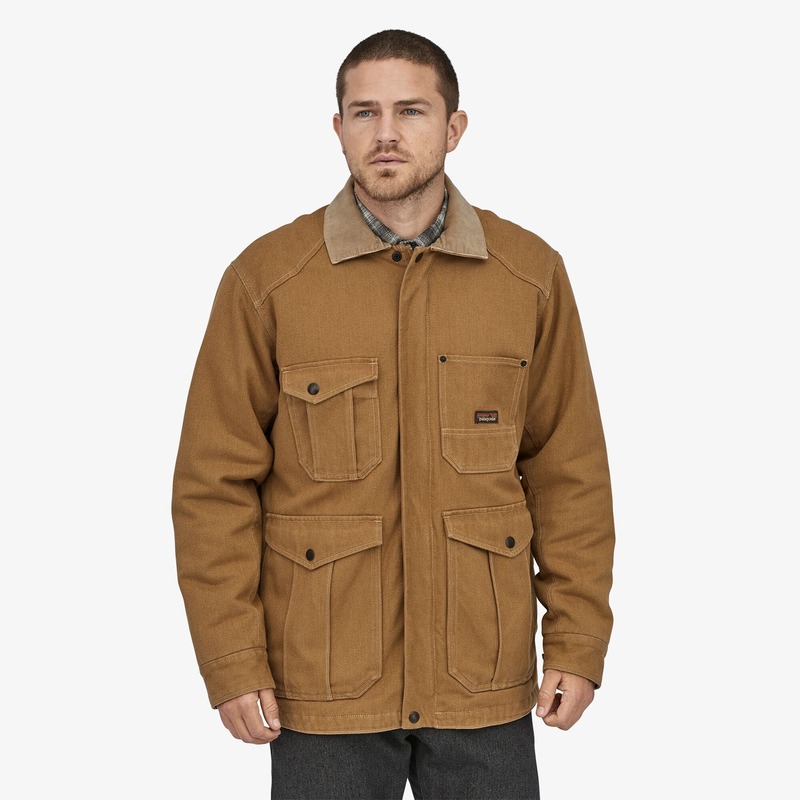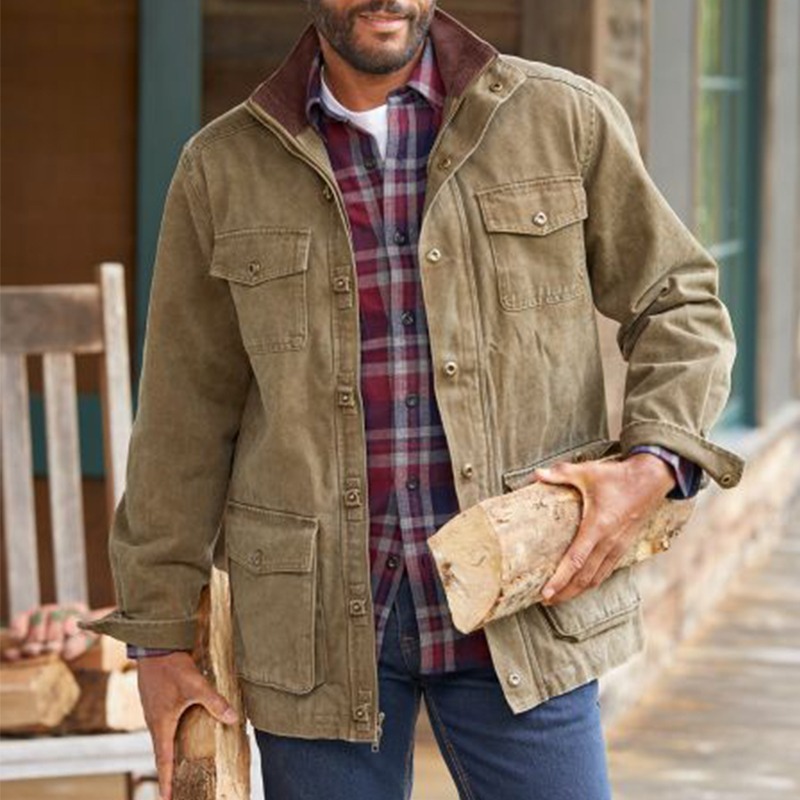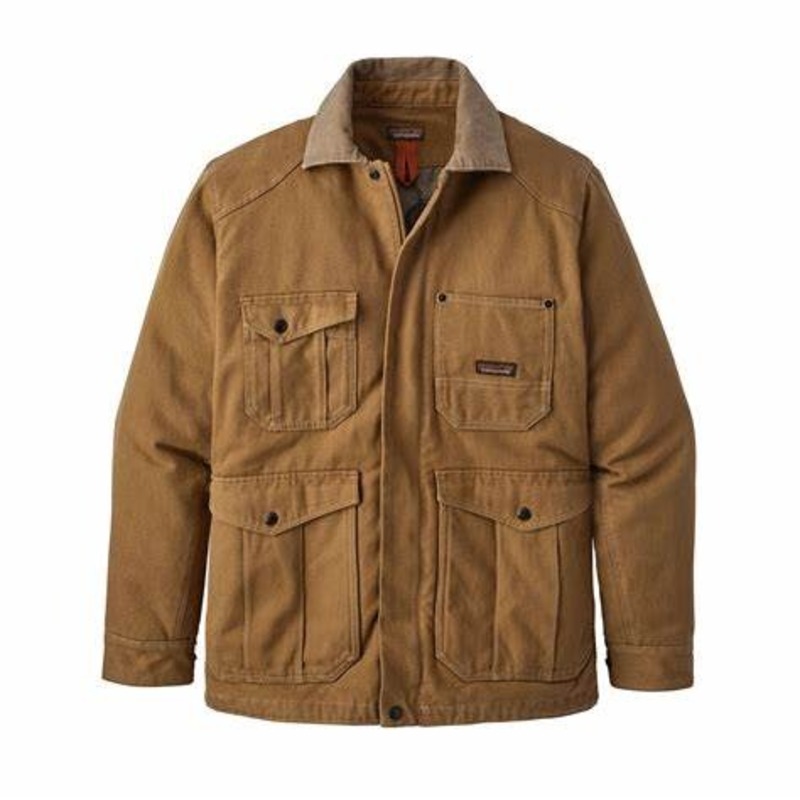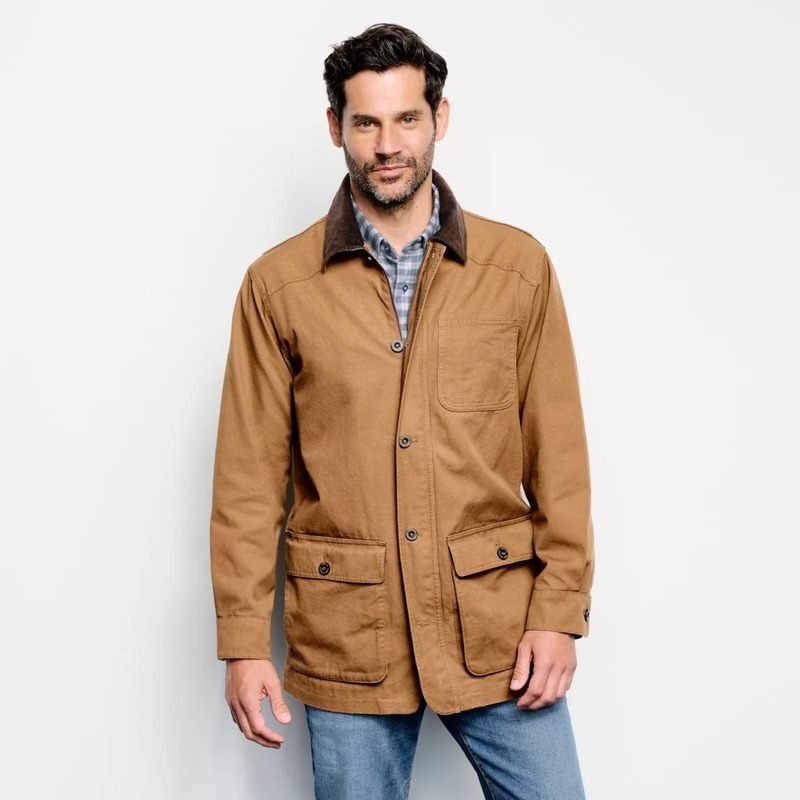
History of the Barn Coat
The barn coat holds a storied place in American history. Originally designed for practical use on the farm, its rugged construction and durable materials made it ideal for shielding farmers from harsh weather conditions. As a protective outer garment, barn coats first received attention in the early 20th century, becoming synonymous with the hard-working American farmer.
These coats became a staple for their versatility and functionality. They typically featured large pockets, meant for storing tools and other essentials. The basic design allowed farmers to move freely and work comfortably. Over the years, the barn coat transcended its utilitarian roots. It evolved into a fashion statement, donned by style-conscious individuals who appreciated its blend of simplicity and durability.
Today, the barn coat seamlessly meshes the worlds of practical workwear and casual fashion. It has even walked down high-fashion runways, proving its timeless appeal. Modern iterations still honor the original practical features but may include updated materials and fits to suit contemporary tastes.
The historical context of the barn coat is not just about the garment itself but also the testament it pays to the enduring spirit of American workers. As such, it holds an essential place in both the wardrobe and the cultural fabric of the nation.
Essential Features of Barn Coats
When selecting a barn coat, certain features are key to ensuring comfort and efficiency. First and foremost, ample pocket space is a must. Large pockets allow for convenient storage of tools, gloves, or personal items. Durability comes next; barn coats should withstand tough working conditions and frequent wear. Look for coats made from sturdy materials with reinforced seams.
Weather resistance is another critical factor; a good barn coat shields the wearer from wind, rain, and even snow. Look for water-resistant or waterproof fabrics to stay dry in wet conditions. The lining of a barn coat adds warmth. Many options come with flannel or thermal linings for colder days.
Ease of movement is important too. Designs that offer room to move without restriction are preferable for active work. Adjustable cuffs and bi-swing back panels enhance mobility. Don’t overlook the front closure – a high-quality zipper or heavy-duty snaps ensure the coat can be securely fastened.
Finally, considering the modern farmer’s needs, contemporary barn coats also incorporate elements of style. A trim fit can provide a more fashionable look without sacrificing functionality. By combining these essential features, a barn coat can be both a practical work garment and a stylish addition to any farmer’s wardrobe.

Popular Materials for Barn Coats
Choosing the right material for a barn coat is vital. This choice impacts durability, comfort, and weather resistance. The most popular materials for barn coats include:
- Cotton Canvas: Ideal for milder conditions, cotton canvas is breathable and sturdy. It’s the classic choice for barn coats.
- Waxed Cotton: For better water resistance, waxed cotton is a go-to. It repels rain and blocks wind.
- Oilskin: A step up for waterproofing, oilskin is cotton treated with oil, making it very resilient against water.
- Wool: Wool barn coats offer excellent warmth and are best for cold climates. They are also naturally water-resistant.
- Synthetic Blends: Modern barn coats sometimes use synthetic fibers for added durability and stretch. They often combine with cotton or wool.
Each material has its pros and cons. Cotton canvas and waxed cotton are perfect for those needing breathability. Oilskin suits wet environments, and wool keeps the cold at bay. Synthetics offer flexibility and often come with added features like UV protection. Always consider your climate and work activities when choosing your barn coat material. This way, you ensure both performance and longevity of your garment.
Choosing the Right Barn Coat for Your Needs
Selecting the ideal barn coat involves balancing practicality and personal preference. To choose the best one for your needs, consider several factors. Begin with the climate. If you’re working in cold temperatures, prioritize warmth. A wool-lined barn coat might serve you well. In wet conditions, lean towards an oilskin or waxed cotton. These materials will keep you dry.
Think about the type of work you do. Do you need lots of pocket space for tools? Or do you need a coat that allows great mobility? If you carry many items, look for barn coats with numerous large pockets. If movement is key, find coats with adjustable cuffs and bi-swing back panels.
Consider the coat’s fit. It should allow for comfortable layering without being too snug. A trim fit works for those who want to mix style with utility. The front closure is also important; choose sturdy zippers or snaps that can withstand daily use.
Remember to factor in durability. A barn coat is an investment, so you want one that lasts. Look for reinforced seams and high-quality materials. Decide how important ease of cleaning is for you. Some materials require special care, while others can go right into the washing machine.
Finally, personal style plays a role. While function is key, you’ll be more satisfied with a barn coat that also looks good on you. Choose a color and style that you’ll enjoy wearing, because the right barn coat is more than just workwear; it’s a piece of your daily life on the farm.

Top Brands for High-Quality Barn Coats
When seeking a high-quality barn coat, several top brands stand out for their craftsmanship and durability. Each brand has its own unique take, providing modern farmers with a range of options to suit their needs.
- Carhartt: Known for rugged workwear, Carhartt offers barn coats that can handle the toughest jobs. Their coats feature robust materials and comfortable fits.
- LL Bean: LL Bean is synonymous with outdoor gear. Their barn coats mix classic style with functionality, suited for both work and casual wear.
- Filson: Filson boasts a legacy of crafting reliable outdoor clothing. Their barn coats are no exception, often made with waxed cotton for weather resistance.
- Barbour: Barbour’s waxed barn coats are stylish yet practical. They’re a favorite for those who value a heritage look with modern performance.
- Orvis: Specializing in fly fishing gear, Orvis also produces durable barn coats. They focus on comfort and freedom of movement in their designs.
- Duluth Trading Company: This brand emphasizes tough, no-nonsense workwear. Their barn coats come with clever features that cater to the needs of active workers.
Choose one of these esteemed brands, and you’re likely to find a barn coat that offers the perfect blend of resilience, comfort, and style, suiting the diverse needs of today’s farmer.
Caring for Your Barn Coat
Maintaining your barn coat is crucial for its longevity and performance. Proper care ensures that your coat remains not only functional but also looks good over time. Here’s a simple guide to taking care of your barn coat:
Read the Care Label: Always start by checking the manufacturer’s instructions. Each barn coat may have specific care guidelines.
Cleaning: Most barn coats can handle regular wear and tear, but they do need cleaning. If your coat is machine washable, use a mild detergent and cold water. For coats that require hand washing, do so gently to avoid damaging the fabric. Oilskin and waxed cotton materials should not go into the washing machine; they need special treatment.
Reproofing: Waxed cotton and oilskin coats need reproofing to maintain their water resistance. Apply wax or oil treatment as directed by the brand.
Drying: Allow your barn coat to air dry. Don’t put it in a dryer as high heat can damage the material. Ensure it is completely dry before storing it to prevent mold.
Storage: Hang your barn coat in a cool, dry place. Avoid folding it to prevent creases and damage to any waxed or treated surfaces.
Repairing: Check your coat regularly for any signs of wear and tear. Early repairs can prevent small issues from becoming big problems. Patch up small tears or holes, and replace any broken snaps or zippers.
Avoiding Harsh Chemicals: Keep your barn coat away from harsh chemicals. They can break down the fabric and protective coatings.
Following these simple steps will help keep your barn coat in peak condition, ensuring you stay protected and stylish on the farm.

Fashion Meets Function: Styling Your Barn Coat
As a modern farmer or outdoor enthusiast, you know that a barn coat is not just for work. It can be a fashion statement too. Mixing function with style is easy with the right approach. Here’s how to style your barn coat for a look that’s both practical and trendy.
Choose a Neutral Color: Start with a barn coat in a neutral color. Colors like tan, olive, or navy are versatile and can pair with various outfits.
Layer Intelligently: For a smart look, layer your coat over a sweater or a flannel shirt. This adds warmth and texture to your outfit.
Accessorize Wisely: Add a touch of personal style with accessories. A beanie hat or a scarf can complement your coat while keeping you cozy.
Roll Your Sleeves: If the weather allows, roll up your sleeves. This casual touch shows off the lining and creates a more relaxed appearance.
Opt for Dark Jeans: Pair your barn coat with dark jeans for a simple, rugged look. They’re both durable and stylish, perfect for outdoor activities or a casual day out.
Add Durable Boots: Complete your outfit with a pair of sturdy boots. Not only do they protect your feet, but they also enhance the barn coat’s functional appeal.
Trim Fit for Form: If you prefer a more tailored look, choose a barn coat with a trim fit. It will outline your structure without restricting movement.
By embracing these styling tips, you can take your barn coat from pure workwear to a statement piece that shows off your unique style while still maintaining its utilitarian roots.
Sustainability and Ethical Considerations in Barn Coat Manufacturing
When buying a barn coat, think about sustainability and ethics. Today’s consumers value products made with respect for people and the planet. Here are key points to consider:
Material Sources: Look for barn coats made from eco-friendly materials. These can include organic cotton or recycled fabrics. Brands that use sustainable sources help reduce environmental impact.
Production Processes: How brands make their barn coats matters. Choose companies that use clean, energy-efficient methods. This reduces carbon footprints and supports a healthier environment.
Labor Practices: Ethical manufacturing ensures fair treatment of workers. Support brands that provide safe working conditions and fair wages.
Transparency: Good brands are open about their manufacturing process. They share where and how they make their barn coats. Choose brands that are transparent about their supply chain.
Durability: A long-lasting barn coat means less waste. Durable coats won’t need replacing often, making them more sustainable over time.
Recycling Programs: Some brands offer recycling for worn-out coats. This keeps the coats out of landfills and supports a circular economy.
Remember these points when shopping for your barn coat. Ethical and sustainable choices can make a big difference. They impact the environment and the lives of those who make our clothes.
